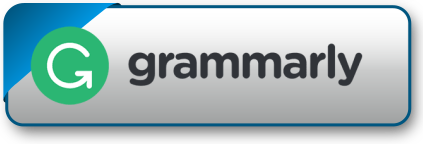Design of Automotive Product Seat Lifting Aids in Minimizing MSD Complaints using AHOQ Method (Case Study: Final Line of Automotive Industry Assembly Process)
DOI:
https://doi.org/10.24853/jasat.4.1.25-34Keywords:
Aids AHOQ MusculoskeletalAbstract
Along with the times, every human level and life will be upgraded automatically. Likewise, the company if it does not adjust to the times, it will be difficult to adjust. As with the production process, there will be differences from time to time. From time immemorial, doing work manually, and in the present era using technological tools. Lifting the car seat manually makes the operator complain of pain, due to the high production volume. To eliminate the complaints from these operators, a proposed tool design was made. The method used is Axiomatic House of Quality. In general, Axiomatic Design can help the product development process be more structured with a focus on design that fits the function of the product. The first step in this research is to collect input from customers. Then after getting input from the customer, it is converted into a customer attribute. Then, develop the concept by making several alternatives based on the combination table. Next, determine the design that will be used and carry out testing and coordinate with the user, namely the assembly operator. Finally, determine the specifications and final design of the tool for lifting a seat whose load exceeds the lifting standard. The results of this study are in the form of a design tool for lifting the seat which is expected to reduce complaints of pain to the operator. So that this design design makes the company a consideration for implementation.Downloads
References
Hamizatun, Zuki, N. M., & Azizul, Q. (2019). Risks assessment at automotive manufacturing company and ergonomic working condition. IOP Conference Series: Materials Science and Engineering, 469(1). https://doi.org/10.1088/1757-899X/469/1/012106.
Amrina, E., Andalas, U., & Yusof, S. (2011). Key performance indicators for sustainable manufacturing evaluation in automotive companies. In 2011 IEEE International Conference on Industrial Engineering and Engineering Management, (December), 1093–1097. https://doi.org/10.1109/IEEM.2011.6118084.
Nelfiyanti, Mohamed, N., & Azhar, N. A. J. (2021). Identification of Ergonomic Issues Among Malaysian Automotive Assembly Workers by Using the Nordic Body Map Method. In Recent Trends in Manufacturing and Materials Towards Industry 4.0: Selected Articles from IM3F 2020, Malaysia, 69–81. Springer, Singapore.
Mishra, S., Kannan, S., Manager, C., Statistics, A., Comments, R., & Alert, E. (2018). Comparing the Effectiveness of Three Ergonomic Risk Assessment Methods—RULA, LUBA, and NERPA—to Predict the Upper Extremity Musculoskeletal Disorders. Indian Journal of Occupational and Environmental Medicine, 22(1), 17–21. https://doi.org/10.4103/ijoem.IJOEM.
Nelfiyanti, & Zuki, N. (2020). Quick response manufacturing and ergonomic consequences in manufacturing environment. IOP Conference Series: Materials Science and Engineering, 788, 012031. https://doi.org/10.1088/1757-899x/788/1/012031.
Cohen, L. (1995). Quality Function Development: How to Make QFD Work for You. Singapore: Addison Wesley Publishing Company.
Maritan, D. (2015). Practical Manual of Quality Function Deployment. New York: Springer.
Ghufrani, M. S. (2010). Perancangan Alat Pengangkut Galon ke Dispenser dengan Pendekatan Metode Axiomatic Design. Surakarta: Unpublished.
Govers. (2001). QFD not just a tool but a way of quality management. Int J Prod Econ 69, 151-159.
Manchulenko, N. (2001). Appliying Axiomatic Design Principles to the House of Quality. Ontario.
Ulrich, K. T. (2001). Perencanaan dan Pengembangan Produk. Yogyakarta: UII Press.
Y, A. (1990). Quality function deployment (QFD) integrating customer requirements into Productivity Press. Portland.
Downloads
Published
Issue
Section
License
COPYRIGHT POLICY
The author(s) of an article published in the Journal of Applied Sciences and Advanced Technology (JASAT) retains ownership of the intellectual property rights in work (s).
PUBLISHING RIGHTS
The author(s) of an article published in the Journal of Applied Sciences and Advanced Technology (JASAT) have unrestricted publication rights. The authors give the Journal of Applied Sciences and Advanced Technology (JASAT) the right to publish the article and designate the Faculty of Engineering Universitas Muhammadiyah Jakarta Publishing as the original publisher of the article.
LICENSING POLICY
JASAT is an open-access journal that follows the Creative Commons Non-Commercial 4.0 International License (CC BY-NC 4.0), which states that:

Under this license, the reusers must give appropriate credit, provide a link to the license, and indicate if changes were made. Users may do so in any reasonable manner, but not in any way that suggests the licensor endorses users or their use.
Please take the time to read the whole license agreement (https://creativecommons.org/licenses/by-nc/4.0/). As long as reusers follow the license conditions, the owner cannot withdraw these freedoms. The following components are included under this license:
 Attribution: Users must provide appropriate attribution, including a link to the license, and indicate whether or not they made any modifications. Users are free to do so reasonably, but not in a manner that indicates the licensee approves of their usage.
Attribution: Users must provide appropriate attribution, including a link to the license, and indicate whether or not they made any modifications. Users are free to do so reasonably, but not in a manner that indicates the licensee approves of their usage.
 NonCommercial: Users may not use the material for commercial purposes.
NonCommercial: Users may not use the material for commercial purposes.












_2.png)


1.png)

2.png)
